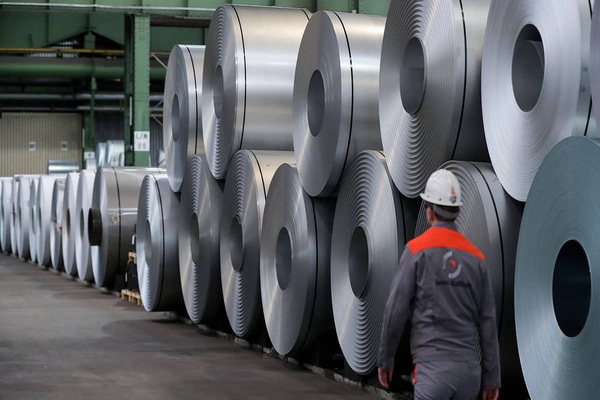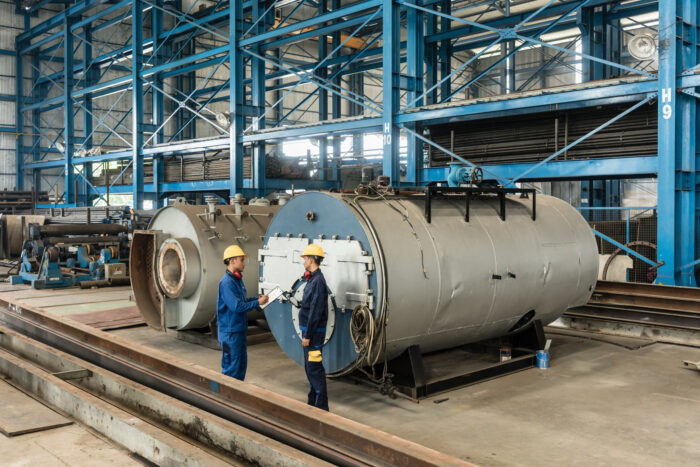English


Views: 222 Author: Tomorrow Publish Time: 2025-07-12 Origin: Site











Content Menu
● Understanding the Stainless Steel Production Process
● Key Elements of Quality Control in Stainless Steel Production
>> Process Control and Monitoring
>> Chemical and Mechanical Testing
>> Non-Destructive Testing (NDT)
>> Statistical Process Control (SPC)
>> Certification and Compliance
>> Employee Training and Engagement
>> Supplier Collaboration and Material Traceability
● Challenges in Quality Control
● Best Practices for Continuous Improvement
● Frequently Asked Questions (FAQ)
>> 1. What are the most important tests for stainless steel quality control?
>> 2. Why is traceability important in stainless steel production?
>> 3. How do manufacturers ensure compliance with industry standards?
>> 4. What role does employee training play in quality control?
>> 5. How can technology improve quality control in stainless steel production?
Quality control in stainless steel production is essential for manufacturing reliable, durable, and high-performance materials. The unique properties of stainless steel, such as corrosion resistance and strength, make it a preferred choice across industries. However, these properties can only be ensured through rigorous quality control measures implemented at every stage of production. This article explores the comprehensive strategies and best practices for establishing and maintaining quality control in stainless steel production, from raw material selection to final inspection.

Stainless steel production involves a series of complex steps, each requiring precise control to ensure the end product meets required specifications. The process typically includes:
- Melting and Alloying: Stainless steel is produced in an electric arc furnace using recycled stainless scrap and various alloys. The molten metal is refined to achieve the desired chemical composition. Precise control of temperature and alloying elements during this phase is critical to avoid contamination and ensure homogeneity.
- Casting: The molten steel is cast into ingots, billets, or slabs. The casting process must be carefully controlled to prevent defects such as segregation, porosity, or cracks. The cooling rate and mold design influence the microstructure and mechanical properties of the cast steel.
- Hot and Cold Rolling: The cast steel is shaped through hot rolling and, if needed, cold rolling to achieve the final dimensions and surface finish. Hot rolling refines grain structure and improves mechanical properties, while cold rolling enhances surface finish and dimensional accuracy.
- Heat Treatment and Pickling: Annealing and pickling are performed to soften the structure and remove surface impurities such as scale and oxides. Heat treatment also helps to relieve internal stresses and restore ductility.
- Finishing: The steel is further processed, cut, or formed to meet specific customer requirements. Finishing processes may include polishing, passivation, or coating to improve corrosion resistance and aesthetics.
Each stage presents potential quality risks, making control measures necessary throughout the process.
Quality control begins with the selection and inspection of raw materials. Stainless steel relies on precise proportions of iron, chromium, nickel, and other alloying elements. Any deviation in raw material quality can compromise the final product. Key steps include:
- Verifying chemical composition through spectroscopic analysis to ensure correct alloying elements and purity.
- Inspecting physical properties such as size, shape, and cleanliness to avoid contamination and ensure process compatibility.
- Ensuring traceability and documentation for all raw materials to maintain accountability and facilitate problem resolution.
Maintaining consistent process parameters is critical for quality. Modern production facilities use real-time monitoring systems to track temperature, pressure, and chemical composition during melting, casting, and rolling. Automated control systems help minimize human error and ensure repeatability. For example, temperature fluctuations during melting can cause uneven alloy distribution or unwanted phases. Continuous monitoring enables immediate adjustments, reducing the risk of defects.
Testing is performed at multiple stages to verify that the steel meets specified standards:
- Chemical Analysis: Ensures the correct alloy composition using methods like Optical Emission Spectroscopy (OES) or X-ray Fluorescence (XRF). This testing confirms that elements such as chromium and nickel are within tolerance to achieve corrosion resistance and mechanical strength.
- Mechanical Testing: Evaluates properties such as tensile strength, ductility, and hardness. Standard tests include tensile, impact, and hardness tests. These tests confirm the steel's ability to perform under mechanical stresses in its intended application.
Routine sampling and testing during production help detect deviations early, preventing defective batches from progressing.
NDT techniques are employed to detect internal and surface defects without damaging the product. Common methods include:
- Ultrasonic Testing: Identifies internal flaws such as cracks, inclusions, or voids by sending sound waves through the material and analyzing reflections.
- Magnetic Particle Testing: Detects surface and near-surface discontinuities by applying magnetic fields and ferrous particles that cluster at defect sites.
- Visual Inspection: Assesses surface quality and finish for defects such as scratches, pits, or scale.
NDT ensures that only defect-free materials proceed to the next stage, reducing the risk of failure in service.
SPC involves collecting and analyzing data from production processes to identify trends and variations. By monitoring key variables such as temperature, chemical composition, and mechanical properties, manufacturers can detect deviations early and implement corrective actions before defects occur. SPC tools include control charts, process capability analysis, and root cause analysis. This data-driven approach helps maintain process stability and improve product consistency.
Before shipping, finished stainless steel products undergo rigorous inspection to confirm compliance with customer and industry standards. This includes:
- Dimensional checks using precision instruments such as calipers and coordinate measuring machines to ensure products meet specified tolerances.
- Surface finish assessment to verify smoothness, absence of defects, and proper treatment.
- Verification of mechanical and chemical properties through final testing.
- Documentation review to ensure traceability and completeness of quality records.
Final evaluation is the last line of defense against defective products reaching customers.
Adhering to international standards and obtaining relevant certifications is vital for quality assurance. Standards such as ISO 9001 and ASTM provide frameworks for consistent quality management. Regular audits and compliance checks ensure ongoing adherence to best practices. Certification also enhances customer confidence and opens access to global markets.
A well-trained workforce is fundamental to quality control. Continuous training programs equip employees with the skills to identify and address quality issues. Fostering a culture of quality awareness and accountability encourages proactive problem-solving and continuous improvement. Employees who understand the impact of their roles on product quality are more likely to adhere to procedures and suggest improvements.
Quality control extends beyond the manufacturing plant. Collaborating with suppliers to establish clear quality expectations and conducting regular audits ensures the reliability of incoming materials. Material traceability systems track raw materials from source to finished product, enabling quick identification and resolution of quality issues. This transparency reduces risks and strengthens supply chain integrity.

Ensuring quality in stainless steel production presents several challenges:
- Variation in Raw Materials: Fluctuations in raw material quality can affect consistency. Different batches of scrap or alloying elements may introduce impurities or alter composition.
- Complexity of Production Processes: Multiple stages and variables increase the risk of errors. Each process step must be carefully controlled and coordinated.
- Detection of Subtle Defects: Some defects such as micro-cracks or inclusions may be difficult to detect without advanced testing methods.
- Compliance with Evolving Standards: Keeping up with changing industry standards and regulations requires ongoing effort and adaptation.
- Equipment Wear and Maintenance: Aging or poorly maintained equipment can introduce defects or variability.
Overcoming these challenges requires a combination of technology, skilled personnel, and robust quality management systems.
Continuous improvement is essential for maintaining high quality standards. Recommended practices include:
- Implementing Lean and Six Sigma methodologies to reduce waste and improve process efficiency. These approaches focus on identifying root causes of defects and streamlining workflows.
- Investing in advanced automation and real-time monitoring technologies to enhance precision and reduce human error.
- Encouraging cross-functional collaboration to address quality issues holistically, involving production, quality assurance, maintenance, and supply chain teams.
- Regularly reviewing and updating quality management systems to incorporate new standards and best practices.
- Soliciting feedback from customers and employees to identify areas for improvement and enhance product quality.
- Conducting periodic training and refresher courses to keep staff updated on procedures and technologies.
By embracing these practices, manufacturers can build a culture of quality that drives long-term success.
Quality control in stainless steel production is a multifaceted endeavor that demands attention to detail at every stage. From raw material inspection to final product evaluation, each step must be carefully managed to ensure the highest standards are met. By leveraging advanced technologies, robust testing methods, and a culture of continuous improvement, manufacturers can consistently deliver stainless steel products that meet or exceed customer expectations. As the industry evolves, maintaining a proactive approach to quality control will remain a key driver of success and competitiveness.

The most important tests include chemical composition analysis, mechanical property testing (such as tensile and hardness tests), and non-destructive testing methods like ultrasonic and magnetic particle testing. These tests ensure the material meets required standards and is free from defects.
Traceability allows manufacturers to track raw materials and production processes from start to finish. This helps identify the source of any quality issues quickly and ensures accountability throughout the supply chain.
Manufacturers implement quality management systems based on international standards, conduct regular audits, and maintain thorough documentation. Compliance is verified through certifications and third-party inspections.
Employee training equips staff with the knowledge and skills to identify and resolve quality issues. Ongoing training programs foster a culture of quality awareness and continuous improvement, reducing the risk of errors.
Technology enhances quality control through real-time monitoring, automated process control, and advanced testing methods. Data analytics and process automation help detect deviations early and maintain consistent product quality.
Stainless Steel Pipes Vs Galvanized Pipes: Durability And Cost Analysis
Comparing Stainless Steel Pipes And PVC Pipes: What You Need To Know?
Stainless Steel Pipes Vs Copper Pipes: Pros And Cons for Industrial Use
Seamless Stainless Steel Pipes Vs Welded Pipes: Key Differences Explained
Stainless Steel Pipes Vs Carbon Steel Pipes: Which One Suits Your Project?
Stainless Steel Sheets Vs Galvanized Steel Sheets: Pros And Cons Compared
Stainless Steel Sheets Vs Aluminum Sheets: Which One Suits Your Project?
Cold Rolled Vs Hot Rolled Stainless Steel Sheets: Key Differences Explained
How To Choose Stainless Steel for Industrial Guardrails And Railings?
